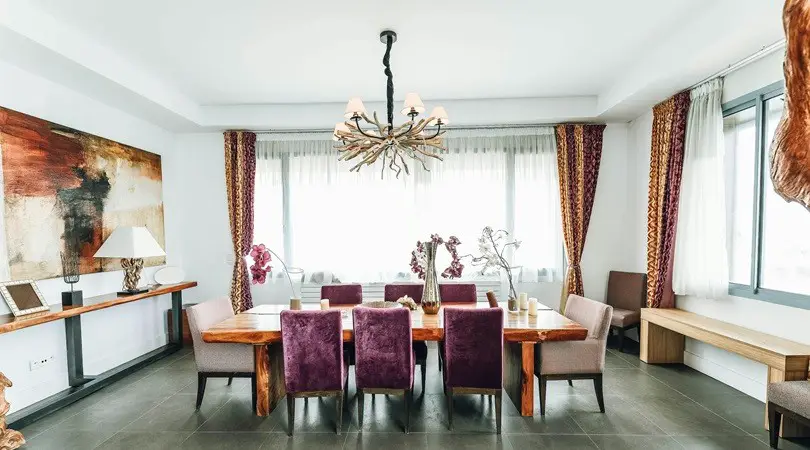Last Updated on January 6, 2025
Are you looking to brighten up your home with natural light? In Charlotte, North Carolina, where the rainfall slightly outpaces even Seattle’s famously wet weather, achieving a sunlit interior may seem like a challenge. But don’t worry; it’s entirely possible with a few smart modifications.
Natural light not only enhances the beauty of your space but also offers health and energy-saving benefits. From selecting the perfect windows to cleverly positioning mirrors, we’re here to guide you through eight practical ways to invite more sunshine into your life. Let’s take a look.
1. Use Mirrors Strategically
One of the simplest yet most effective ways to amplify natural light in your home is by using mirrors. Placing a large mirror directly across from a window can double the light entering a room by bouncing it back into the space. For even greater impact, consider positioning mirrors in areas where they can catch light from multiple angles throughout the day.
This method doesn’t just add light; it also creates an illusion of depth and space, making smaller rooms feel larger and more open.
2. Choose the Right Windows
Choosing the right windows is crucial for maximizing natural light in your home. In Charlotte’s rainy climate, it’s crucial to choose windows that not only let in ample light but also protect your home from the elements. So, look for the best Charlotte window replacement company to help you out with this project instead of deciding on your own. A reputable company can offer a variety of custom, energy-efficient window designs that enhance natural light while keeping your home dry and comfortable.
From bay to picture windows, the right choice can transform a previously dark and uninviting room into a bright and welcoming space. Remember, investing in quality windows is not just about aesthetics; it’s also about improving your home’s energy efficiency and comfort.
3. Lighter Wall Colors
The color of your walls can dramatically affect the perception of light in a room. Dark colors absorb light, making spaces feel smaller and more confined, while light hues reflect it, enhancing brightness and openness.
Repainting your walls in shades of white or light pastels can significantly increase the amount of light reflected throughout your home. This is a relatively easy and cost-effective way to make your rooms appear brighter and more inviting. Additionally, consider a matte finish over a glossy one, as it provides a soft, even dispersion of light without the glare that can come with shinier surfaces.
4. Install Skylights
Skylights can be a fantastic solution for rooms where windows aren’t sufficient to bring in the desired amount of daylight. By opening up your home to the sky above, skylights flood interior spaces with direct sunlight, even on cloudy days. They are especially effective in centrally located rooms or areas where privacy concerns limit the use of traditional windows. Modern skylights are designed to be energy-efficient, with options for ventilation, tinting, and even UV protection.
While the installation of skylights is more involved than some other light-enhancing solutions, the dramatic increase in natural light and the skyward views can transform your living space.
5. Use Sheer Curtains
Heavy, dark curtains can significantly reduce the amount of natural light entering a room. By swapping these out for lighter, sheer fabrics, you can maintain privacy while still allowing sunlight to filter through. Sheer curtains offer a soft, diffused light that can make any room feel airy and bright. They’re especially useful in living areas and kitchens where you spend much of your day.
This simple change can make a dramatic difference in how light your home feels without compromising on style or privacy.
6. Trim Exterior Foliage
Sometimes, the barrier to more natural light is just outside your window. Overgrown trees and bushes can block sunlight from entering your home, making interiors appear darker than they need to be. Regularly trimming back foliage not only improves the amount of light coming through your windows but also enhances your home’s exterior appearance and view. This maintenance task is particularly important in Charlotte, where lush greenery can quickly grow.
By keeping your landscaping well-manicured, you ensure that your home receives as much light as possible throughout the year.
7. Add Glass Doors
Replacing solid doors with glass ones is an effective way to increase natural light in your home. This can apply to both exterior and interior doors. For instance, a frosted glass door can brighten a hallway or bathroom without sacrificing privacy. Meanwhile, clear glass doors leading to the outside or between rooms create open sightlines, allowing light to travel freely and illuminate multiple areas of your home.
This approach is especially effective for back entrances or patios, where natural light can be maximized during the day.
8. Reflective Flooring
Reflective flooring can amplify the natural light in your home by bouncing it upward, similar to how mirrors reflect light. High-gloss tiles, polished concrete, or shiny hardwood floors can significantly increase the brightness of a room. If replacing floors is not an option, consider using large, light-colored rugs that can also reflect light to a lesser extent.
This strategy works well in conjunction with other methods mentioned earlier, such as using lighter wall colors and strategic placement of mirrors.
Conclusion
Incorporating more natural light into your home is a worthwhile project that can transform your living space into a brighter, more welcoming environment. From simple adjustments like changing curtains and trimming exterior foliage to more significant changes such as installing skylights or replacing doors with glass alternatives, each strategy offers its own benefits. In Charlotte, NC, where the landscape and climate present unique challenges and opportunities, utilizing these tips can help you make the most of the natural light available, regardless of the season.
Remember, while some solutions may require a bigger investment, the payoff in terms of aesthetic appeal, energy efficiency, and personal well-being is substantial.








